This post may contain affiliate links. If you make a purchase through a link, I may receive a small commission, at no cost to you. These commissions help keep this website up and running, and I thank you for your support. Read my full disclosure here.
Disclaimer: This is not a sponsored post, I paid for this trip myself. All recommendations and opinions are my own.
Although I wouldn’t call myself a serious ‘birdwatcher’ I do enjoy watching them in the garden and when I’m out hiking either in woodlands or cliff sides. It’s been on my bucket list to see Puffins for some time, but so far, the closest I’ve gotten to seeing them was on the menu whilst in Iceland! But when we moved to the UK, I found out about the wonderful Farne Islands in Northumberland, and was excited that I would finally get the chance to see them.
Before heading to the Farne Islands, you need to plan your trip carefully depending on what you want to see, as the islands are closed for landings during the winter, and the birds are only there at certain times of the year for nesting. As we wanted to see the puffins, we visited at the end of April. Below I’ve listed each of the months and what you can expect to see. However, be aware that all timings are approximate, as the weather and other factors can affect migration, nesting and breeding times.
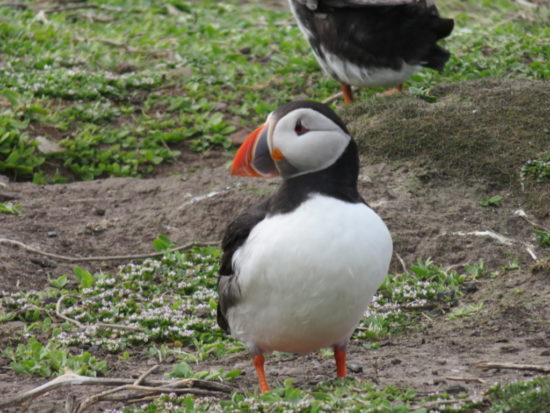
January, February & March
Islands: Inner Farne and Staple islands are closed but you can still get a boat around the islands.
Seals: Grey seals can be seen by boat.
Birds: Shags are a year-round highlight and fulmars may be starting to arrive.
April
Islands: Inner Farne is open, but Staple is still closed.
Seals: Grey seals can be seen by boat.
Birds: The first puffins arrive on land, pairing up and displaying dominant or submissive behaviour. Eider ducks start returning mid-month and other seabirds – kittiwakes, fulmars, guillemots, razorbills, sandwich terns, common terns – start to arrive. Shags, cormorants, spoon bills and white-tailed eagles might be seen flying overhead. The shags will be displaying their breeding crests.
May*
Islands: Both Inner Farne and Staple are open
Seals: Grey seals can be seen by boat.
Birds: Puffins, eider ducks, kittiwakes, fulmars, guillemots, razorbills, sandwich terns, common terns, shags, and many more birds can be seen on the islands. This is the best month to see the eiders nesting on Staple.
Tip:
- Bring a hat to protect you from the dive bombing Arctic terns.
June*
Islands: Both Staple and Inner Farne are open
Seals: Grey seals can be seen by boat.
Birds: Puffins can be seen on the islands, and pufflings start to hatch (though you can’t see the baby puffins, as they are underground in the burrows). Other seabirds – kittiwakes, fulmars, guillemots, razorbills, sandwich terns, common terns, shags can be seen on the crowded island cliffs. Eider ducks start to leave and are generally gone by the start of July. Arctic terns are nesting on Inner Farne.
Tip:
- Bring a hat to protect you from the dive bombing Arctic terns who will be protecting their chicks.
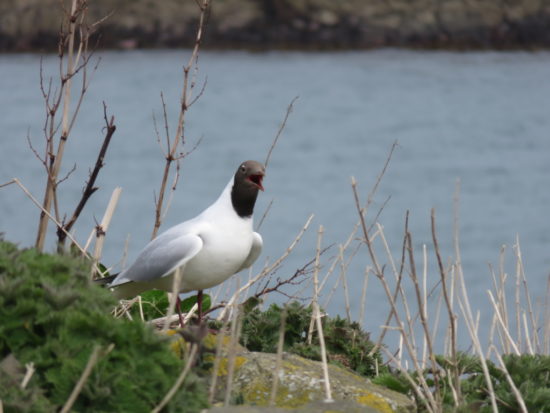
July*
Islands: Both Staple and Inner Farne are open.
Seals: Grey seals can be seen by boat.
Birds: Puffins can be seen on the islands. Pufflings are still hatching, and some of the older ones will be heading towards the sea. Other seabirds – kittiwakes, fulmars, guillemots, razorbills, sandwich terns, common terns, shags – can be seen on the islands, along with many other species. Arctic terns nest until mid-month so you will still need a hat. Jumplings (baby guillemots) are leaving the cliffs by jumping into the sea – normally in the evening but occasionally in the daytime.
Tip:
- Bring a hat to protect you from the dive bombing Arctic terns who will be protecting their chicks.
August
Islands: Inner Farne is open but Staple is closed.
Seals: Grey seals can be seen from boats.
Birds: Puffins are departing, but you may catch some at the beginning of the month. Arctic terns, guillemots, razorbills, sandwich terns, and common terns begin to leave too. Kittiwakes and fulmars can be seen until the end of the month. Shags are still on the islands and you may see some overwintering birds arriving to re-fuel before they head to the mainland (keep an eye on the stick bundles near the Pele Tower).
September
Islands: Inner Farne is open but Staple is closed.
Seals: Grey seals and can be seen from boats. You might spot the first fuzzy seal pup!
Birds: Shags can be seen on the islands.
October
Islands: Inner Farne is open and Staple is closed.
Seals: This is peak time for seeing adorable fluffy seal pups as they gather on the rocks in their thousands, peaking at the end of October.
Birds: Shags can also be seen on the islands.
November – December
Islands: Inner Farne and Staple are closed.
Seals: Grey seals and seal pups can be seen from boats.
Birds: Shags can be seen from the boat.
* During the breeding season, May – July, the Inner Farne tours are only available in the afternoon. Throughout April, August, September and October this tour is available morning and afternoon.


The boat tours to the Farne Islands depart from Seahouses Harbour, sat nav NE68 7RN. Seahouses is a quaint little harbourside village with a variety of shops, pubs and café’s. We booked online with Billy Shiel’s Boat Trips and chose the 2.5 hour Inner Farne bird sanctuary tour which included a boat tour around the islands and an hour of bird watching on Inner Farne. Both Inner Farne and Staple Island are owned by the National Trust (NT) so if you plan to choose a boat tour that includes an island landing, then as well as the boat tour fee, you will also need to pay a landing fee to the NT. However, if you are a NT member, then you can land for free.
We booked the first departure of the day, so arrived at Seahouses early in the morning and parked at the main carpark just of the Main St roundabout. The parking is pay and display and there is also a public toilet here.
We headed to main office by the carpark (here is also an office you can buy tickets at their booth on the harbour) to check in, then we were directed to head down to the NT booth on the harbour to show our NT cards for our pass to the Inner Farne island. If you don’t have a NT card, this is where you can the entry fee.
Thankfully apart from a bit of wind, the weather was clear as we set off on the open boat. The staff were very welcoming and made sure we all got safely on board. We then headed out on a tour around the islands.
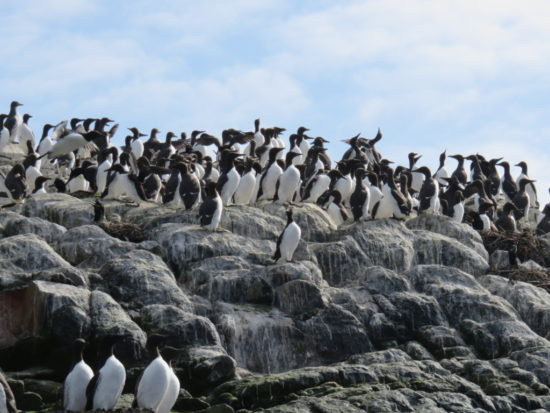

The captain provided a running commentary as we were brought up alongside the island cliffs. They were crowded and raucous sea birds including guillimots, razor bills, shags and kittiwake. I loved the way the guillimots flew like torpedos zooming through the sky and landing rather ungracefully in the water with a splash. They reminded me of little flying penguins, they looked so awkward.
There was a real buzz onboard the boat when we finally got to see the first puffins. They were bobbing atop the surface of the water, then would dive below in search of food. The lucky ones then reappeared with a mouthful of food. As they took off, they fluttered rather awkwardly back to the island.
We also got to watch the grey seals lolling around on the rocks on the edge of the islands, barking and groaning at each other. Occasionally we would see a head bob out of the water to look up at us with their gorgeous big black eyes.
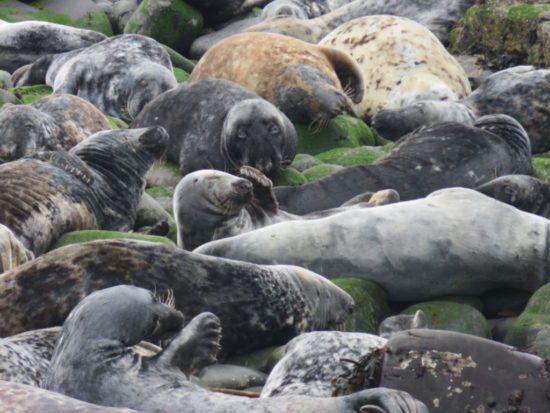
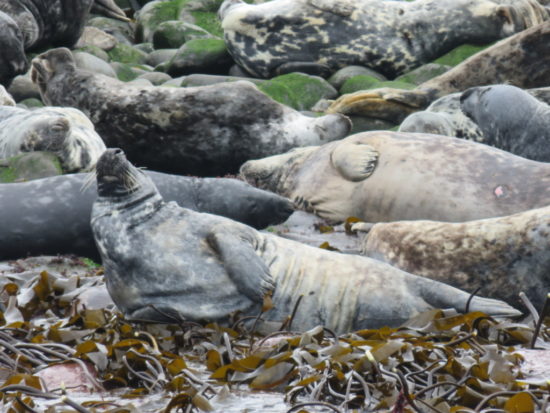
The two lighthouses on the Farne Islands were manned by a succession of keepers until the 20th century. The captain took us on a tour of the route taken by lighthouse keeper William Darling and his daughter Grace during their heroic rescue in 1838. The pair went out on a stormy night with only a row boat and rescued survivors of the paddle steamer the ‘Forfarshire’ which was destroyed when it ran aground on rocks. They managed to rescue 9 of the 62 passengers and crew and as a result, Grace went on to become a Victorian celebrity.
We eventually landed on Inner Farne, where we had an hour to explore and birdwatch. There were toilets here and a small information centre with helpful rangers, keen to educate everyone about the bird life on the island. I was also surprised to find a church here. Apparently, it was part of a much larger monastic complex, but this is the only remaining building. The church was built on the island in 1370 and is dedicated to St Cuthbert who spent over 10 years on the island living as a hermit from 684.
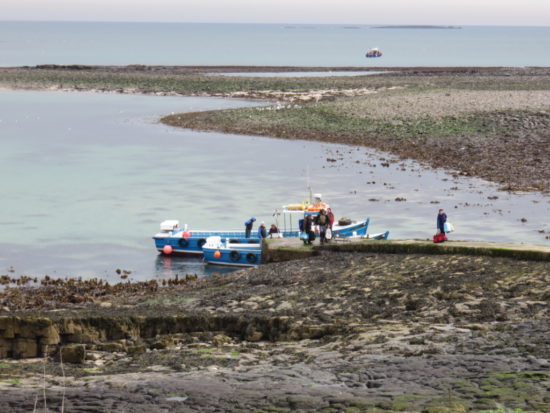
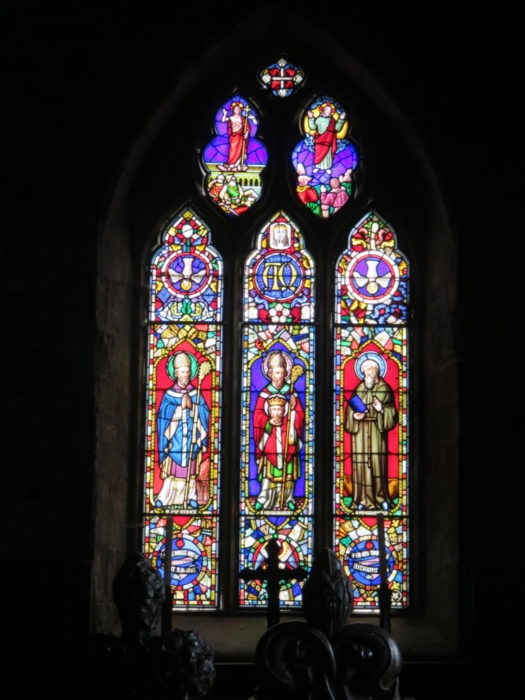
Inner Farne is a small island of 16 acres. It has a wooden boardwalk circuit, suitable for disabled visitors, that takes you in a circuit around the island. Although it doesn’t take long to walk the circuit, there were so many birds to see that we easily filled the hour spotting the different breeds and watching their entertaining antics. At the start of the walk we found warning tape cutting into the path edge and wondered why it was there. It took us a few moments to realise it was there to protect an eider duck that had made its nest on the paths edge. Its camouflaged feathers placed it at risk of being tread on, hence the taped off area.
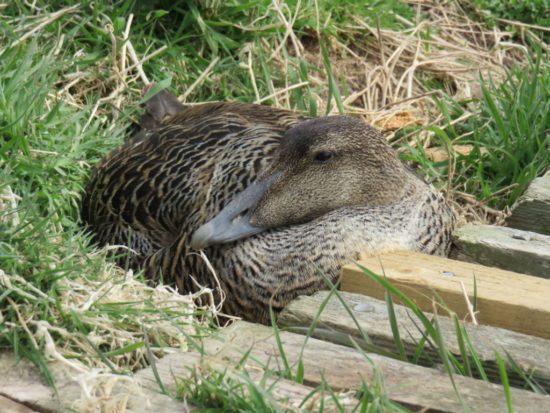
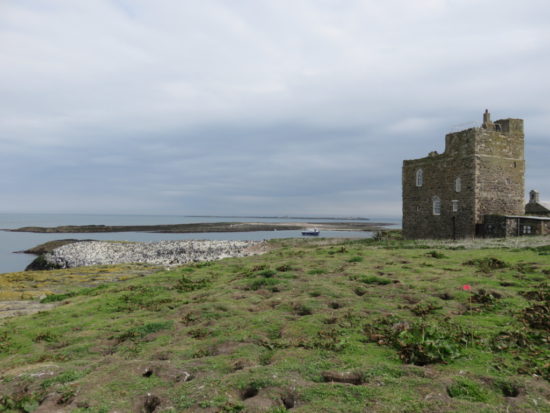
We were excited to see puffins and other sea birds all over the island and I loved how we were able to get up close to see them. They were smaller than I was expecting. They were so cute with their sad eyes. It was fun watching their antics. We even saw some puffins peeking out of their burrows.
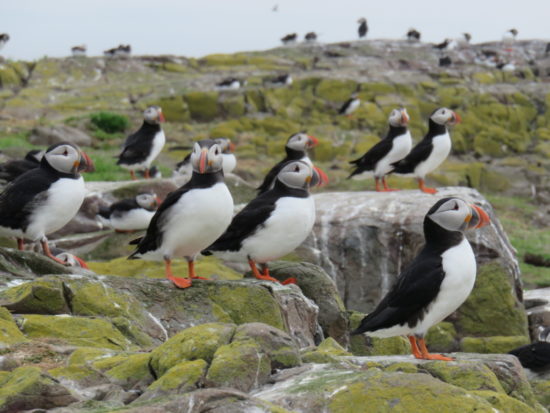
Following our landing, we jumped back on the boat and headed back to the mainland. We were starving when we returned to shore, so decided to indulge in some classic British seaside fish and chips in Seahouses. We visited the local fish and chip shop Lewis’s Fish Restaurant which is on the main street, not far from the harbour and also offers takeaways. The fish was lovely and fresh, and there were also non-fish items on the menu for non-seafood eaters. Don’t forget to get a side of mushy peas for a true British fish and chip experience!
Accommodation Options in Seahouses and Surrounding Areas
The accommodation is quite limited in and around Seahouses, so book early, or consider staying somewhere else nearby and driving to Seahouses. Search available accommodation in and around Seahouses
Budget
Moderate
Luxury
Practical Tips for Visiting the Farne Islands
- Boat Trip Tour: We went with Billy Shiel’s Boat Trips and chose the 2.5 hour Inner Farne bird sanctuary tour which included a boat tour around the islands and an hour of bird watching on Inner Farne. If you are visiting Northumberland for a few days, the I recommend booking your boat trip on the first day in case they have to cancel due to bad weather. Then there is still a chance that you may be able to go the following day.
- Book in advance: The puffin season is short and very popular, so the boats and accommodation in the area get booked out quickly.
- What to wear: It can get really cold out on the water and you can get a little wet from the sea spray. The islands are also quite exposed and can be rather windy and cold. Wear a waterproof and windproof jacket, warm hat and gloves, I love the Helly Hansen range of raincoats. If you are visiting between May and July, then wear a sunhat with a brim to protect you from the dive bombing Acrtic terns who are protecting their young.
- What to take: If you want to get a close view of the birds and seals from the boat, then take a pair of waterproof binoculars with you, and a camera with a good zoom so you can get some memorable shots.
- Think about getting a National Trust membership. We have been members ever since we moved to the UK. Not only do you get free entrance into the islands, but there are lots of amazing NT properties to visit in the area and car parks around the UK.
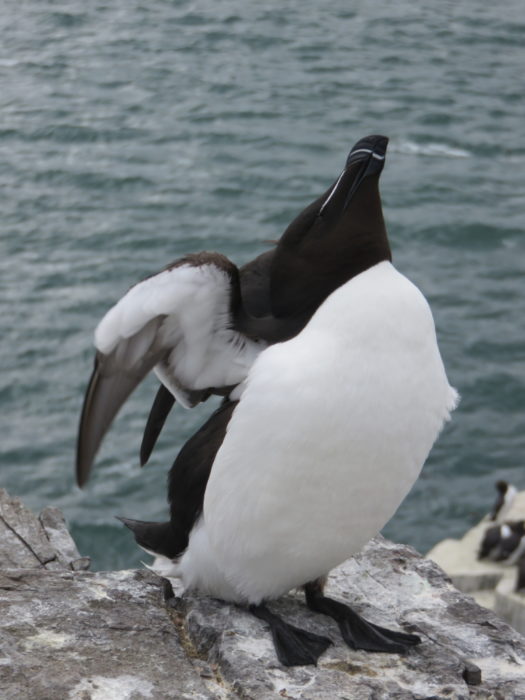



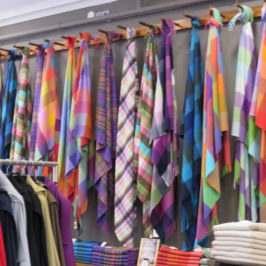

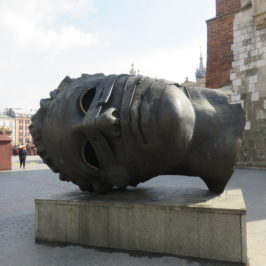
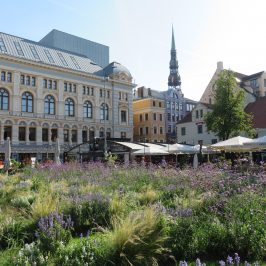


Leave a Reply